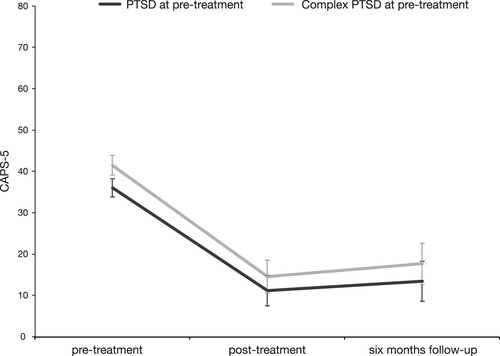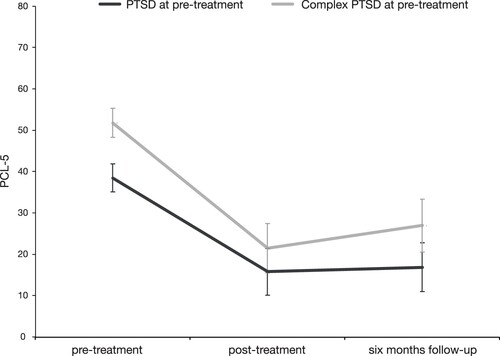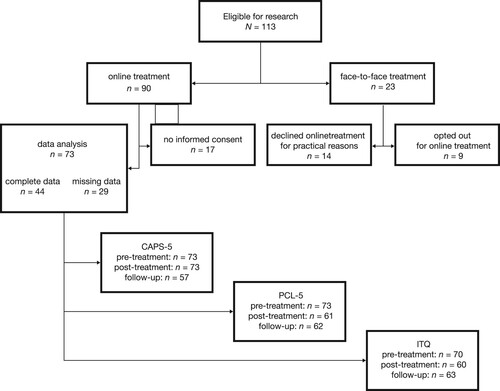Figures & data
Table 1. Descriptives of the total sample of patients at baseline: Mean scores of the Clinician Administered PTSD Scale for DSM-5 (CAPS-5), PTSD Checklist for DSM-5 (PCL-5), and International Trauma Questionnaire (ITQ), age and sex, PTSD and Complex PTSD diagnosis, traumatic events according to the Life Events Checklist for DSM-5 (LEC-5), comorbidity, suicidal ideation.
Figure 2. Predicted mean scores of the Clinician Administered PTSD Scale for DSM-5 (CAPS-5) for patients with PTSD and patients with Complex PTSD across the three measurement points (n = 70). Error bars represent 95% CI’s for the mean.

Table 2. Multilevel regression analyses of the Clinician Administered PTSD Scale for DSM-5 (CAPS-5) by measurement moment, age and sex, and Complex PTSD.
Figure 3. Predicted mean scores of the PTSD Checklist for DSM-5 (PCL-5) for patients with PTSD and patients with Complex PTSD across the three measurement points (n = 70). Error bars represent 95% CI’s for the mean.

Table 3. Multilevel regression analyses of the PTSD Checklist for DSM-5 (PCL-5) by measurement moment, age and sex, and Complex PTSD.
Table 4. Pairwise comparisons of pre-, post-treatment and follow-up scores for the whole sample.
Table 5. Pairwise comparisons of pre-, post-treatment and follow-up scores for patients with PTSD at pre-treatment.
Table 6. Pairwise comparisons of pre-, post-treatment and follow-up scores for patients with complex PTSD at pre-treatment.
Data availability statement
Due to the nature of this research, participants of this study did not agree for their data to be shared publicly.

